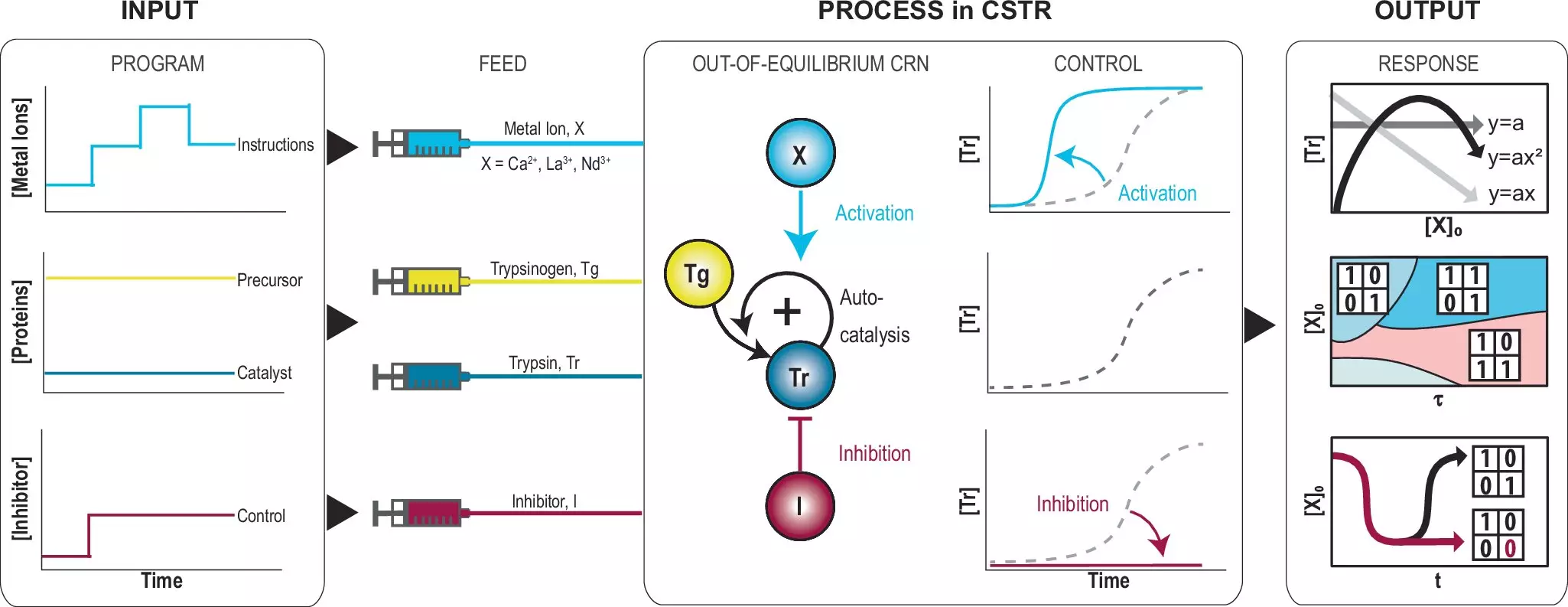In an epoch where technological advancements are incessantly redefining boundaries, researchers at the University of Twente have unveiled a groundbreaking technique that harnesses metal ions to govern chemical reactions with remarkable precision. This innovative approach does not merely serve as a scientific curiosity; it represents a potential trajectory towards developing computing systems that emulate the intricacies of human cognition. Their findings, recently shared in Nature Communications, illuminate a captivating intersection between chemistry and information processing.
Unlike conventional digital computers that operate on vast amounts of energy, living organisms process information through intricate networks of chemical reactions, exhibiting unparalleled efficiency. This remarkable paradigm shift, where information processing in biological systems requires dramatically less energy, has long intrigued researchers. The quest to synthesize natural processes using artificial molecules has garnered significant attention over the decades, culminating in significant strides made by the University of Twente team.
The researchers have pushed the envelope by successfully replicating complex mathematical operations with metal ions, notably employing polynomial functions like linear equations and parabolas. Furthermore, they delved into the realm of logical Boolean functions, which vary their outputs contingent upon input parameters. What sets this study apart is its ability to program chemical reactions not just to react to current stimuli, but also to possess a form of memory that retains information about previous states. Albert Wong, one of the leading researchers, emphasizes that this discovery holds promise as a foundational element for future intelligent systems.
The research harnessed the dynamics of autocatalytic reactions—self-accelerating chemical reactions—to gain control over the conversion of trypsinogen to trypsin. By introducing a substance that dampens this conversion rate, the system was able to attain a dual-state condition, thereby manifesting a rudimentary memory function. This innovative capability signifies a shift from transient chemical interactions towards more complex chemical networks that can embed memory, thus laying the groundwork for potential advancements in artificial intelligence and smart materials.
The ramifications of this research transcend the confines of chemistry and artificial intelligence alone. It opens avenues for significant exploration in fields such as nanobiotechnology, where the foundations of life’s chemical complexity may be elucidated. Additionally, it may catalyze a revolution in the understanding of chemical origins, enriching the dialogue surrounding the emergence of life on Earth.
The University of Twente’s breakthrough in controlling chemical reactions ushers in a new era of bio-inspired computing. As the boundaries of traditional computing continue to be redefined, it is becoming evident that the future may very well lie in the elegant dance of chemical interactions, mimicking the cognitive prowess that nature has honed over millennia. Ultimately, this research paves the way for a plethora of applications that bridge the gap between biology, artificial intelligence, and cutting-edge technology.


Leave a Reply